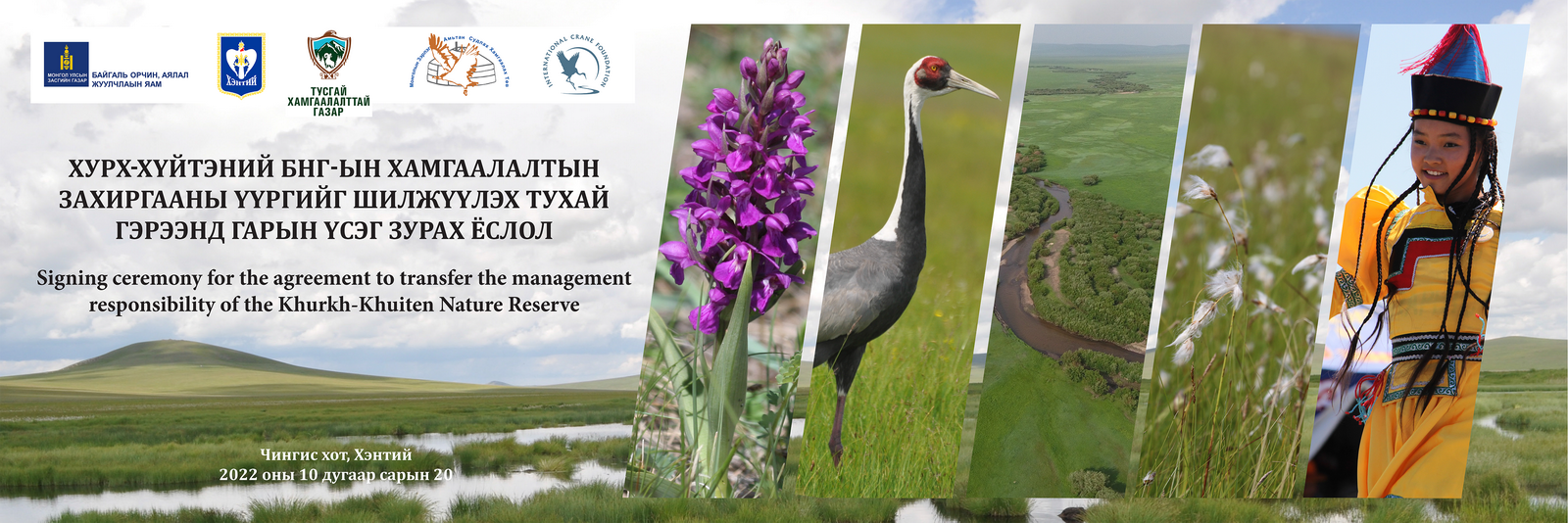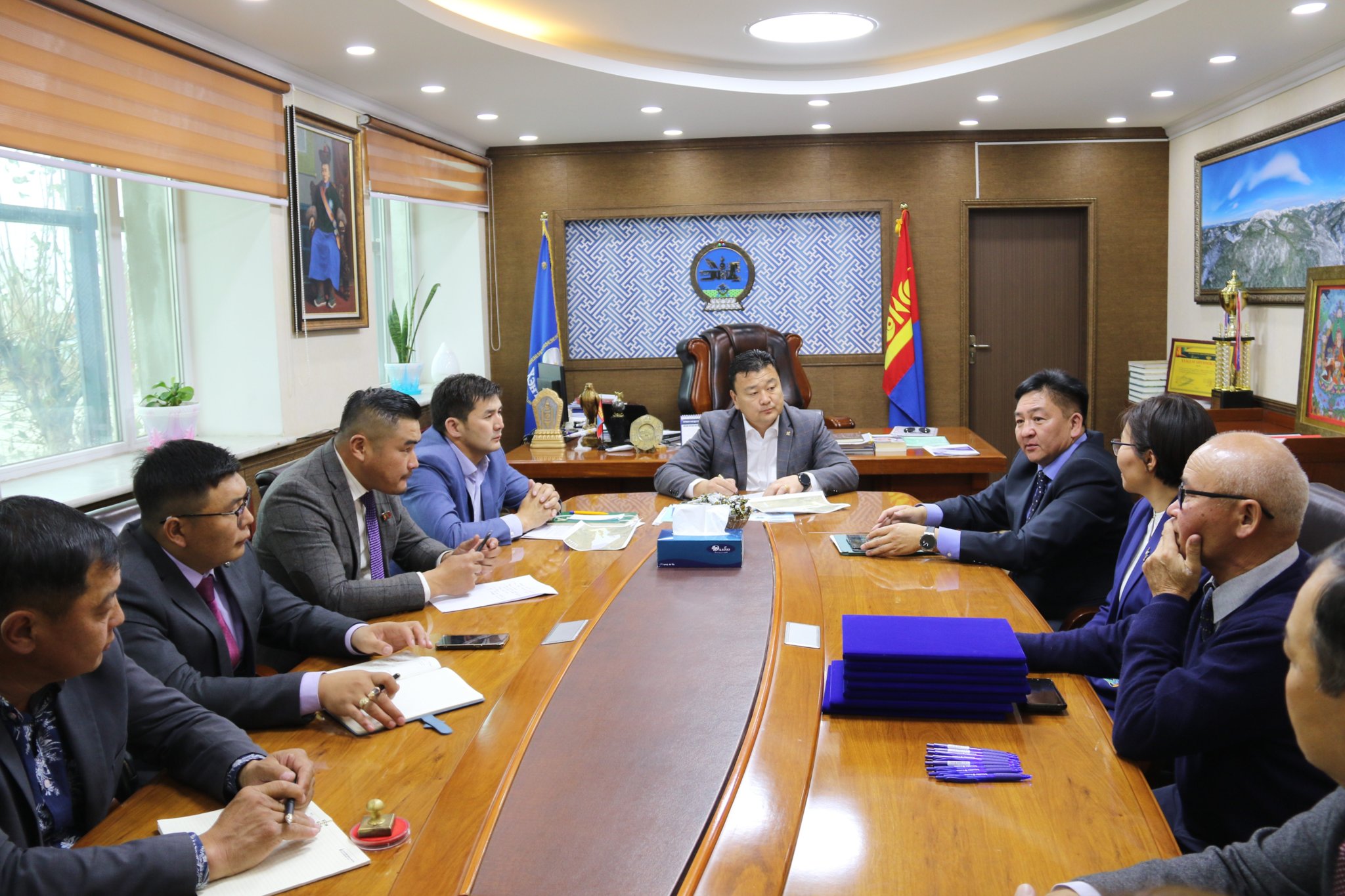Historic Agreement Signed to Manage Vital Grasslands and Wetlands in the Khurk-Khuiten Nature Reserve of Mongolia
A landmark deal was signed to transfer the management responsibility of the newly established Khurkh and Khuiten Nature Reserve to our team. Our team will be using a participatory management approach that ensures collaboration with local herders and authorities to manage this import reserve with rich habitats, cranes and other wildlife.
Ulaanbaatar, Mongolia – Following the designation of the Khurkh-Khuiten River Valleys in Northeast Mongolia as a National Nature Reserve by the Mongolian Government in May 2021, this week the Department of the Protected Areas Management at the Ministry of Environment and Tourism, the Governor of Khentii Province, together with leaders of the four counties surrounding the Nature Reserve signed an agreement with the Wildlife Science and Conservation Center, a Mongolian non-government organization to coordinate management of the landmark reserve. Read more about the reserve here.

The Governor of Khentii Province Mr. Chogsomjav Tsendjav announced, “The Valleys of the Khurkh and Khuiten Rivers are important both locally and globally. We must work together to preserve this shared natural treasure. It is my great pleasure to entrust the management responsibility to such dedicated and experienced people and community leaders supporting this cause.”
The Khurkh-Khuiten Nature Reserve is a rich ecosystem supporting a mix of grasslands and wetlands that provide a haven for the world’s most important breeding concentration of Vulnerable White-naped Cranes. Up to 70 pairs nest in the area, which also supports important breeding populations of Demoiselle and Eurasian Cranes, a regular group of summering Siberian Cranes, and other threatened species such as the Swan Goose and Great Bustard.
Local herding communities also graze their livestock herds here with the wetlands providing a critical source of water for both herders and their animals. Yet trampling of waterside vegetation by livestock, and disturbance and predation by herders’ dogs, pose significant threats to the breeding success of cranes nesting around the wetlands. One of the challenges for the new nature reserve will be to develop a participatory management plan that collaborates with local herders to better manage these habitats and protect cranes and other wildlife.
Since 2013, the Wildlife Science and Conservation Center has regularly engaged with communities through outreach and education. Socio-economic surveys are helping managers to understand and respond to the priorities and perceptions of herding families. The center has helped improve the livelihoods of women by developing markets for handicrafts sold to tourists. The organization plans to recruit local guides and guards for the new reserve and develop a research center with a place for communities to meet.

Dr. Nyambayar Batbayar says, “After almost ten years of committed work and effort, we have achieved this historic milestone today. We are signing an agreement for the conservation of one of the most critical nesting wetlands for the White-naped Crane. Let’s work together to ensure this beautiful nature reserve can be safeguarded for the cranes, the wetlands and the local community.”
Recently, the International Crane Foundation, an international conservation non-governmental organization based in Wisconsin, USA, signed a Memorandum of Understanding with the Ministry of Environment and Tourism, agreeing to support the Wildlife Science and Conservation Center to manage activities in and around the Nature Reserve. Dr. Rich Beilfuss, President and CEO of the International Crane Foundation commended all parties involved in this historic initiative, saying “Co-management partnerships between conservation organizations and governments are a powerful new way to make long-term commitments for improving protected area management and supporting sustainable development.”

